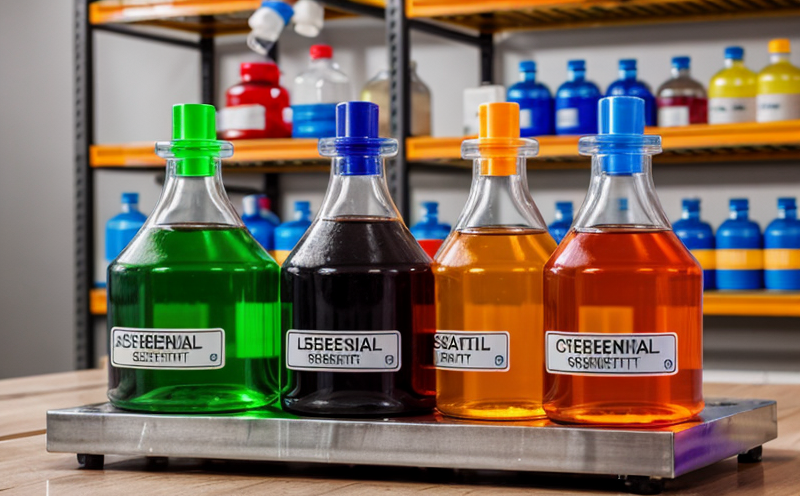Lead Content Testing in Household Goods
The presence of lead in household goods has been a significant concern due to its potential health risks, especially when ingested or absorbed by children and pregnant women. This service focuses on detecting and quantifying the levels of lead within various household items such as toys, jewelry, furniture, paint, ceramics, and electronics. Understanding the implications of lead exposure is crucial for ensuring product safety and compliance with international standards.
Lead can enter the human body through ingestion or inhalation when it becomes part of a consumer product. As per ISO 81530-2:2015, lead content testing is essential to identify whether a product meets regulatory limits set by authorities like the U.S. Consumer Product Safety Commission (CPSC) and European Union's Restriction of Hazardous Substances Directive (RoHS).
Our laboratory uses advanced analytical techniques such as Inductively Coupled Plasma Mass Spectrometry (ICP-MS), which is highly sensitive and accurate for detecting trace amounts of lead. This method ensures precise measurement down to the ppb (parts per billion) levels, making it suitable for rigorous compliance checks.
Before testing begins, we carefully prepare each specimen according to industry best practices. For instance, when testing toys, we ensure that all paint and surface coatings are removed using appropriate solvents before analysis. This preparation step is critical because the lead content in these materials can vary significantly depending on how they were processed.
During the testing process, our experts follow strict protocols to minimize contamination risks and maintain high accuracy. Once the samples are analyzed, results are reported promptly with detailed breakdowns of detected elements along with compliance assessments against relevant standards. Our reports not only inform clients about their current state but also provide actionable insights for future improvements.
By partnering with us, businesses can gain valuable knowledge regarding potential hazards associated with lead usage in their products. This information helps them make informed decisions aimed at reducing risks while maintaining product quality and marketability.
Benefits
The benefits of conducting Lead Content Testing in Household Goods extend beyond mere compliance; they contribute significantly to public health protection and brand reputation enhancement. Here are some key advantages:
- Enhanced Safety: Identifying lead content helps protect consumers from harmful exposure, particularly children who may be more vulnerable.
- Avoidance of Legal Penalties: Compliance with regulations prevents costly lawsuits and potential product recalls.
- Improved Brand Image: Demonstrating commitment to safety builds trust among customers and stakeholders.
- Purposeful Product Development: Insights gained through testing can guide R&D efforts towards safer alternatives or improved manufacturing processes.
These benefits underscore the importance of proactive measures in managing lead content within household goods, ensuring both regulatory adherence and consumer confidence.
Industry Applications
In the realm of Consumer Products & Product Safety Testing, Lead Content Testing is applicable across multiple industries where lead-containing materials might be present. Some specific sectors include:
- Toys and Games: Ensuring compliance with safety regulations for children's playthings.
- Jewelry: Detecting lead in metals used in jewelry manufacturing to meet regulatory requirements.
- Furniture: Analyzing fabric treatments, finishes, and adhesives for potential lead contamination.
- Ceramics & Porcelain: Checking glazes and paints applied on these items to avoid lead poisoning risks.
- Electronics: Evaluating components that could release lead during production or use.
The versatility of this testing service allows it to cater effectively to diverse industries, each with its unique challenges related to lead exposure. By addressing these issues proactively, companies can ensure they meet stringent safety standards while safeguarding public health.
Quality and Reliability Assurance
At our laboratory, quality assurance plays a pivotal role in delivering reliable results that are trusted by industry leaders. We adhere to strict internal controls throughout the testing process:
- Calibration: Regular calibration of instruments ensures consistent accuracy.
- Cross-Validation: Results from multiple tests conducted independently are compared for consistency.
- Data Verification: Our analysts cross-reference findings against established benchmarks to confirm reliability.
- Continuous Improvement: Ongoing training and updates on latest methodologies ensure our team remains at the forefront of scientific advancements.
This commitment to quality extends beyond mere technical accuracy; it encompasses transparency, reliability, and consistency. Clients can rest assured that every result they receive is backed by robust evidence and meticulous adherence to international standards.





